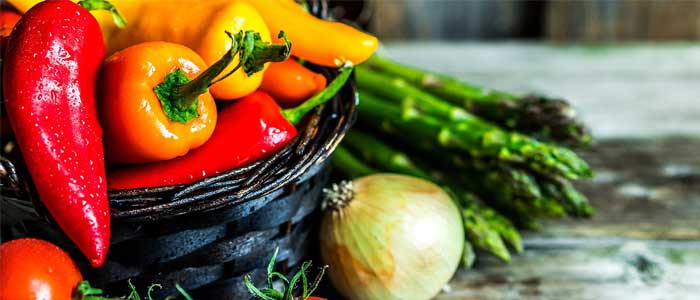Eating is one of the few things in the world we can safely safe everyone does, so it is no surprise that it has been dissected in so many different ways. What we eat is one of the most influential factors in determining our lifelong health, a fact that can be scaled up to show different trends across nations and particular demographics.
In days gone by, the conversations we had around diet tended to focus on what was put in the food, with the likes of GMOs and trans fats making the headlines. More recently, the focus has shifted towards how our food is sourced, with “buying local” being one of the main campaigns. But now, there’s a new topic of conversation en vogue: seasonal eating.
What Is Seasonal Eating?
As you are no doubt already aware, the vast majority of fruits and vegetables are seasonal, meaning they are only naturally ready to harvest at particular times of the year. While some plant foods, such as cabbage or mushrooms, can be harvested year-round, the majority have a very clearly defined window period in which they are ready for human consumption. Seasonal eating means sticking to these windows, eating only products that are in-season at that time.
But despite the fact that asparagus is only technically available from April to July, and strawberries from May to September, you have likely seen these products on the shelves throughout the whole year. This is achieved by using a number of different techniques, such as using GMOs or new breeds of the plant, freezing the produce, or harvesting before maturation is complete.
What Are The Benefits Of Seasonal Eating?
Like the eating local campaign, the impact on the environment is one of the main selling points, as eating seasonally means less energy is used for transport and storage. But in terms of human health, the difference between consuming a product that is in-season and one that is not is quite stark.
It is important to note that the quality of food we grow has already deteriorated rapidly over the last few decades, with one study showing we would need to eat 8 oranges to get the same nutritional value as an orange 50 years ago. We are already at a disadvantage nutritionally, but this is only compounded when you realise that certain food products, such as green beans, can lose up to 77% of their nutrition when they spend a week in the fridge.
Overall, the quality of food grown out-of-season is lower for a number of reasons. If it is a new breed of the plant, it may be able to grow outside of the normal window, but that window appeared naturally because it was the best time for that plant to get the nutrients it needed. So while new breeds may be able to survive out of their natural season, they do not thrive, and the end-product is lower quality.
Many of the products are harvested before they are ripe, to extend the length of time available for transport, meaning they are less nutritious. And many are stored for so long that by the time they are eaten, their nutritional value has fallen dramatically.
Seasonal eating is always more cost-effective for both the consumer and the producer, but more importantly, it is more nutritional. The key thing to remember is that food products that are grown out of season are grown for profit. It doesn’t matter if the fruits or vegetables have a lower nutritional value as long as they are there to sell. And the fact is that most consumers won’t think about any of this, and will buy the product anyway.
Switching to seasonal eating isn’t always the easiest transition to make, as you quickly realise that many of your favourite foods are only available for a short period of the year. But if you stick with it, you will quickly realise the difference in the quality and taste of the products, and find a new appreciation for the variety of foods available at different times of the year.






